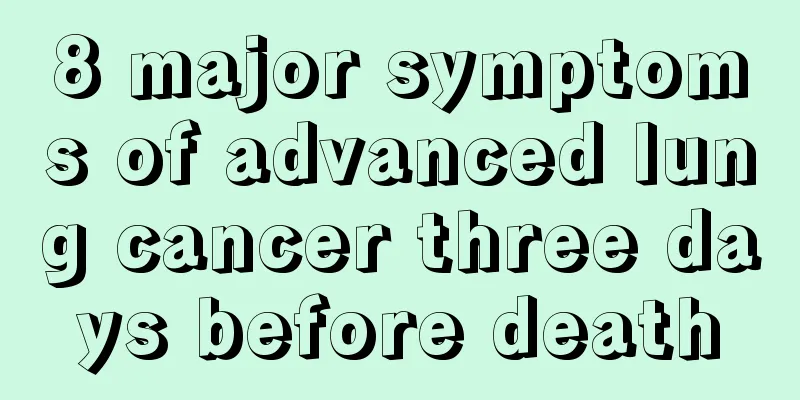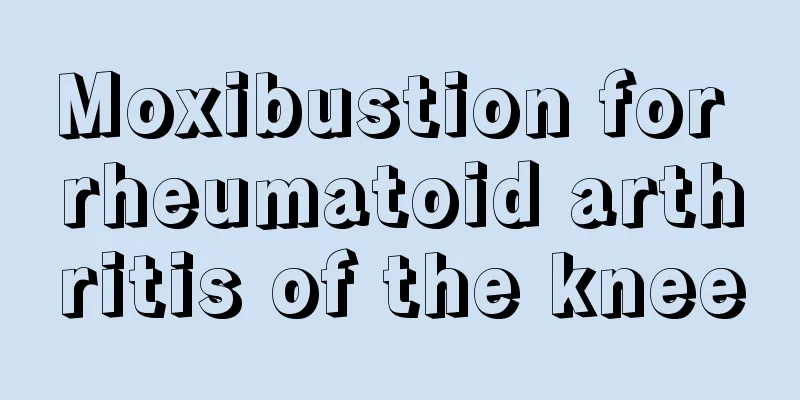Can goiter be cured? It manifests itself in this way

|
What we usually call goiter is actually a term for enlarged thyroid gland. When the disease occurs in the early stage, there will only be a lump, and there is no pain. If it is not treated in time, many discomforts will occur. This disease is curable, but severe cases require surgical treatment. 1. What is goiter? Goiter is commonly known as thick neck disease or big neck disease. Goiter can be divided into two types: diffuse enlargement and localized enlargement. Diffuse enlargement refers to uniform enlargement of the thyroid gland on both sides, which is usually not a tumor, while localized enlargement is often caused by a tumor on the thyroid gland. Therefore, when you find that your thyroid gland is enlarged, you should first determine its shape and characteristics. Patients with goiter should first determine the extent of their pain. Severe pain is usually caused by various thyroid inflammations, such as acute suppurative thyroiditis and subacute thyroiditis, both of which require timely treatment. Mild pain is not special because a variety of thyroid diseases may cause this symptom and it needs to be diagnosed through formal examination, so it is best to see a doctor in time. 2. Symptoms of Big Neck Disease In the early stages of goiter, only a hard, painless lump appears in the anterior neck. The lump has an uneven surface and grows rapidly, and does not move much up and down when swallowing. Subsequently, cervical lymph node metastasis occurs, and compression symptoms may appear, such as difficulty breathing, swallowing obstruction, and hoarseness. Early symptoms of thyroid enlargement: a lump in one lobe of the thyroid gland, which grows slowly, is usually solitary, has a complete capsule, is clearly demarcated from the surrounding normal tissue, is painless and tender, has a medium-hard texture, a smooth surface, is not adhered to the surrounding area, and can move up and down with swallowing. The neck becomes thicker and the texture is generally soft. When the swelling is obvious, the mass in the front of the neck may protrude forward and fall or compress backward, causing shortness of breath or even dyspnea, or also cause a feeling of choking when swallowing; in the case of nodular type, the size and hardness of the nodules may be uneven, and some nodules are harder; there are generally no systemic symptoms, and there is a history of local epidemics. 3. Is goiter easy to treat? The treatment of goiter can be symptomatic, and surgery is required for those with obvious symptoms. For those with obvious goiter, levothyroxine can be tried. For those with obvious goiter and compression symptoms, surgical treatment should be actively adopted. The causes of sporadic goiter are complex and difficult to treat, especially for elderly patients. Levothyroxine can be given, but the effect is often not obvious. During the treatment, the level of thyroid-stimulating hormone must be strictly checked and the medication must be adjusted according to the level of thyroid-stimulating hormone. |
<<: Self-treatment gymnastics for cervical spondylosis can actually be done like this
>>: What are the causes of spots on the face? There are three reasons
Recommend
Does pineapple peel absorb formaldehyde?
We have to wait for some time before we can move ...
What are the diagnostic and examination methods for colorectal cancer?
Colorectal cancer is a malignant tumor that serio...
What color underwear is good for your body
In modern social life, a curvy figure is the most...
Small blisters on hands in hot weather
We have all seen small blisters, but most people ...
How to remove oil stains from the outside of a non-stick pan?
Non-stick pans are a very famous type of modern c...
What medicine is used for medical abortion
Medical abortion is a method of terminating pregn...
What organ is behind the ribs?
In daily life, people often experience pain in th...
Which is the best hospital for treating advanced liver cancer
Which hospital is more formal in treating liver c...
Using inferior shampoo can easily induce skin cancer
There are many factors that induce skin cancer, i...
What should I do if I have acute mumps?
We often encounter some common diseases in our li...
Exercise can help bone cancer patients recover
Bone tumors are tumors that occur in bones or the...
How to perform chemotherapy after breast cancer surgery
Clinically, patients with stage III and IV breast...
Warm-up exercises before morning jogging
Morning jogging helps us improve our body's r...
Ten amazing uses of hair dryers that you definitely don’t know about
What is the use of a hair dryer? I believe most p...
What to eat to make teeth strong
In our daily life, we not only need to maintain g...









